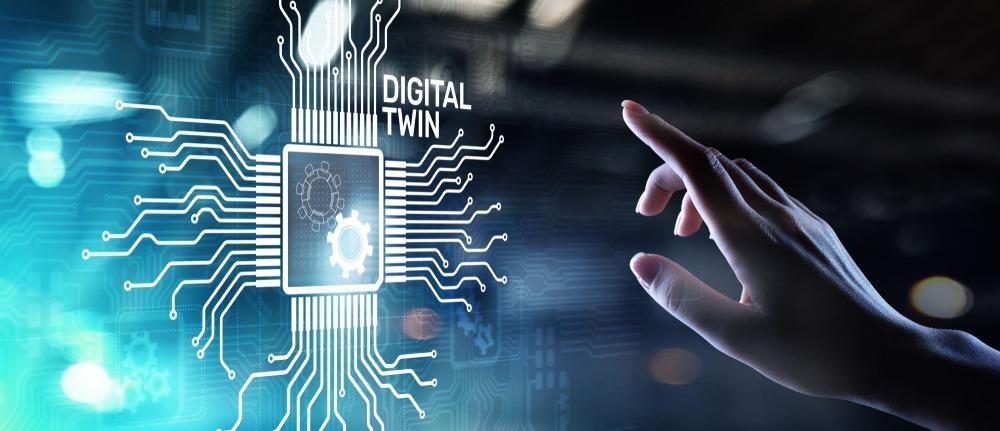Digital twins are increasingly becoming a key technology in many industrial sectors. This article will look at what digital twins are and how they are being applied in deep-sea mining operations for the 3D visualization of assets.

Image Credit: Wright Studio/Shutterstock.com
What are Digital Twins?
Digital twins are virtual representations of physical assets and systems. These virtual “twins” are dynamic and updated in real-time from sensor and IoT-connected technologies. Simulations can be run in digital twins, negating the need for physical intervention in an asset or system, and minimizing operational downtime. Companies including Microsoft, GE, IBM, Siemens, and Bosch lead the field.
Different parameters can be monitored, analyzed, and adjusted in digital twins to elucidate information on the optimal performance of physical objects. Energy output, environmental conditions, temperature, and pressure are factors and parameters that can be accurately and dynamically simulated using this technology. Predictive maintenance is provided using digital twins, allowing engineers to intervene before catastrophic failures occur.
While they are similar to simulations, digital twins differ in several key ways. Firstly, digital twins benefit from real-time data from suites of sensors on the physical object, a two-way information flow. Secondly, there is a difference in scale – simulations tend only to analyze a single process, whereas a digital twin provides information on an entire system. Far more vantage points can be considered using a digital twin. Essentially, it is an entirely virtual environment.
Digital twins have found application in various sectors, including manufacturing, the automobile industry, aerospace, and the wind turbine industry. They offer powerful insights into the real-world and real-time operation of processes and devices over various scales, up to entire industrial operations. Different types of digital twins include component twins, asset twins, and system twins.
What are the Benefits of Digital Twins for Deep-Sea Mining?
Several valuable resources such as lithium, copper, and aluminum are found on the ocean floor, but mining in deep underwater environments is a highly challenging procedure.
The inaccessibility and extreme conditions on the ocean floor make this type of mining different from traditional land-based mining. Equipment such as crawlers and riser systems cannot be easily accessed for maintenance if a critical equipment failure occurs.
Due to the immense costs associated with accidents and equipment failures, both in terms of the equipment itself and in lost resources and project time, predictive maintenance is a better option.
Utilizing technologies such as sensors, artificial intelligence, and IoT devices to feed real-time operational and environmental data into a digital twin of the asset improves the efficiency and economic viability of mining operations by reducing downtime.
Physical assets can also be controlled remotely due to the interconnection between the asset and its twin. Algorithms that govern all the aspects of the operation of an asset can be used to automate processes, replace manual workers, improve safety, and reduce costs. This is particularly advantageous for deep underwater mining as equipment cannot be accessed as easily as in surface mining projects.
Case Study: Creating a Digital Twin for Seafloor Nodule Mining Systems
The digital revolution is key to the industry's future, a field that is still in its infancy. Innovation and collaboration will drive the industry as it explores hard-to-reach environments and exploits precious underwater resources.
Polymetallic nodules contain critical resources and are found across vast areas of the ocean floor, most abundantly at abyssal depths. To meet the challenges of mining these nodules, The Metals Company has collaborated with Kongsberg Digital to create digital twins.
One of the main challenges with mining polymetallic nodules is their location. At abyssal depths, there is total darkness, making exploiting this resource a challenging endeavor. The twins developed by Kongsberg will help visualize these resources, significantly enhancing the efficiency of extraction, and constitutes an important first step in successful operation.
The Metals Company has successfully performed an initial test of its equipment in the North Sea, testing the capabilities of collectors and systems onboard Hidden Gem. In this vessel, the test will be monitored. The Kongsberg-designed digital twin has been central to the success of this initial test of the robotic remote nodule collector. Importantly, due to accessibility, the project’s accountability to regulators and stakeholders is enhanced.
The company will learn from the data gathered using the physical asset’s twin. Operations will be adapted to improve efficiency and safety and consider environmental protection demands. By successfully completing the first initial test, the company has paved the way for environmentally conscious, fully automated and adaptive mining of polymetallic nodules.
The Future
Multiple industries are embracing digital twins. Providing engineers with powerful training tools, predictive maintenance capabilities, and adaptive management of entire systems and assets without physical intervention is especially important due to remote underwater environments. Digital twins are, therefore, revolutionizing the industry. The industry's future will be more data-driven and virtual, and digital twins are just one technology that is changing the face of mining.
References and Further Reading
IBM (2022) What is a digital twin? [online] IBM.com. Available at: https://www.ibm.com/topics/what-is-a-digital-twin
Moore, P (2021) The Metals Company collaborating with Kongsberg Digital to create a seafloor nodule mining system digital twin [online] im-mining.com. Available at: https://im-mining.com/2021/11/23/metals-company-collaborating-kongsberg-digital-create-seafloor-nodule-mining-system-digital-twin/
Miskinis, C (2018) How ore mining will be improved using digital twin simulations [online] challenge.org. Available at: https://www.challenge.org/insights/digital-twin-in-mining/
Buckley, T, Jones, A & Clarke, M (2021) Use of an Adaptive Management System to Minimize Impacts of Deep-Sea Nodule Collection, Marine Technology Society Journal 6 pp.110-116. https://doi.org/10.4031/MTSJ.55.6.1
Disclaimer: The views expressed here are those of the author expressed in their private capacity and do not necessarily represent the views of AZoM.com Limited T/A AZoNetwork the owner and operator of this website. This disclaimer forms part of the Terms and conditions of use of this website.